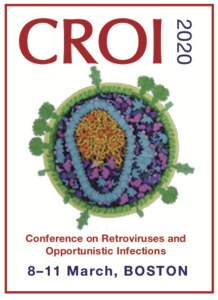Safety and PK of bNAb elipovimab (GS-9722) support two-weekly dosing
12 March 2020. Related: Conference reports, Antiretrovirals, CROI 27 (virtual) 2020.
Elipovimab (GS-9722) is a broadly neutralising monoclonal antibody (bNAb) that targets the V3 glycan motif of the HIV envelope.
It was engineered from the bNAb PGT-121 to have an improved formulation that includes reduced immunogenicity and a longer half-life. It is given by infusion and has the potential to be used as treatment and PrEP. It has also been studied in combination with the TLR7 agonist vesatolimod to target the reservoir in cure-related research.
An oral presentation at CROI 2020 included results from an HIV negative phase1a single- (SAD) and multiple (MAD) ascending dose study and an HIV positive phase 1b study.
In the first, 49 HIV negative participants received single doses of 150 mg, 500 mg and 1500 mg and then multiple doses of 150 mg, 500 mg and 1000 mg or matching placebo (n=6 in each group). All participants were Hispanic/Latinx/Black and the group included 7 women.
Safety results were generally good, with only two grade 3 events and two discontinuations – both in the 1000 mg MAD group (a grade 2 infusion-related event and grade 3 thrombocytopenia). Pharmacokinetics (PK) was linear and dose-proportional (AUC, Cmax and Cmin). A half-life of 26 hours using a target Cmin >50 ug/mL (3 x IC95 cut-off was used to determine in vitro breadth). Although 9/37 (24%) participants had antidrug antibodies, this didn’t affect PK (note: though it would expect to affect efficacy).
In the phase 1b study, 32 HIV positive people on suppressed ART were randomised to SAD and MAD doses of 150 mg and 500 mg (or matching placebo). This was a predominantly male cohort (only two women) and was 60% white.
PK results were similar to the HIV negative study (including 9/24; 37%) with anti-drug antibodies and no new safety signals. One participant had a grade 3 small intestinal obstruction (150 mg; SD) that was judged unrelated.
The study concluded that doses up to 500 mg were safe to take forward into phase 2 studies and that the long half-life supports dosing every two weeks.
Reference
Ruane P et al. Safety & pharmacokinetics of GS-9722 in HIV-negative participants and people with HIV. CROI 2020, 8–11 March 2020, Boston/virtual. Oral abstract 39.
https://www.croiconference.org/abstract/safety-pharmacokinetics-of-gs-9722-in-hiv-negative-participants-and-people-with-hiv/ (abstract)


 Simon Collins, HIV i-Base
Simon Collins, HIV i-Base